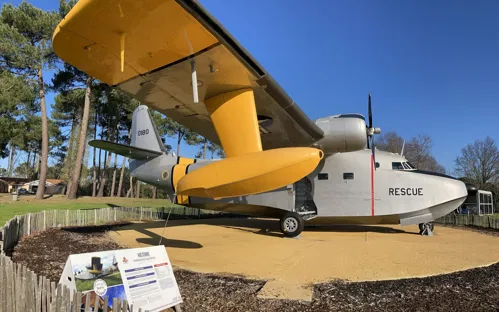Museum Hydraviation and its collection
The Museum of Hydraviation is situated in the scenic town of Biscarrosse, nestled in the French department of Landes. This location offers visitors a chance to explore the rich history of seaplanes while also enjoying the natural beauty of the region.
Historical Significance of the Museum's Location
The Museum of Hydraviation is located near the lake of Biscarrosse and Parentis, on the site that was once the assembly and test base for the Latécoère seaplanes. This historical connection adds a layer of authenticity and significance to the museum's exhibits.
Quality Tourism Brand
In November 2020, the Museum of Hydraviation was awarded the Quality Tourism brand. This recognition commits the museum to offer more comprehensive initiatives in terms of public reception, visitor engagement, online information visibility, valorization of heritage and collections, and eco-responsibility.
Science & Technology History & Anthropology Aviation Industrial heritage















